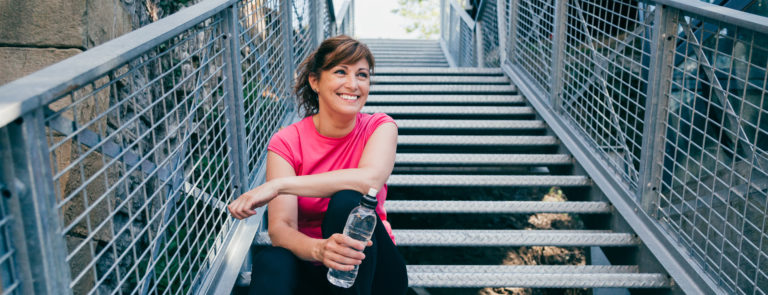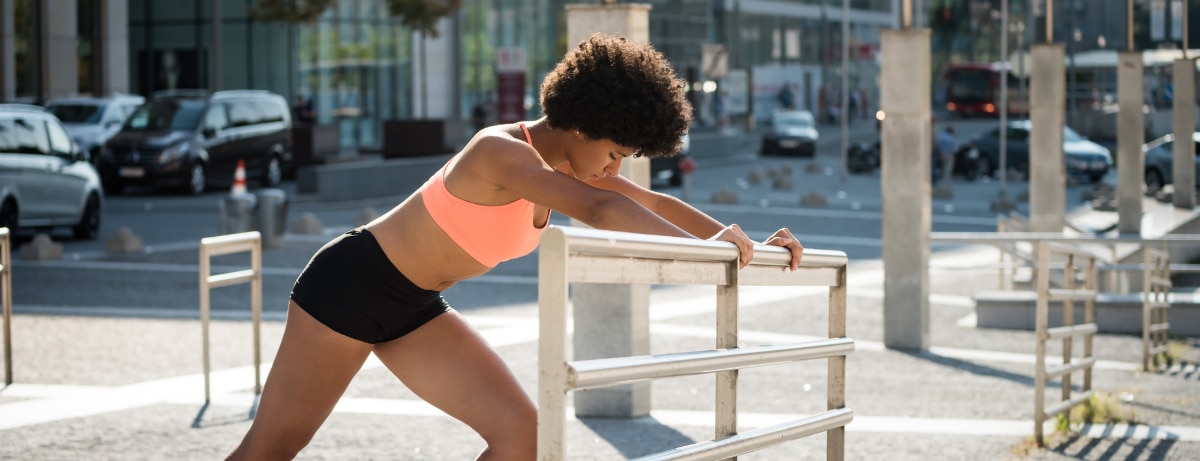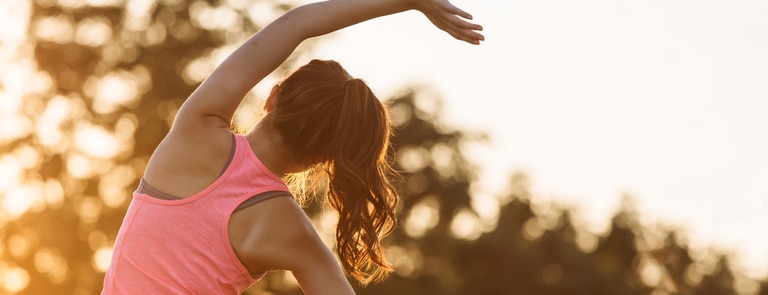10% off £35
Code:SAVE
Beginners guide: How to get into fitness

There’s no “right” way to get active, it’s all about getting moving that little bit more and finding something you enjoy doing. Use our guide to fitness to get your started.
Are you ready to embark on a new journey to a fitter, healthier and happier you?
There’s no “right” way to get active, it’s all about getting moving that little bit more and finding something you enjoy doing. Use our guide to fitness to get your started.
Benefits of exercise
No matter your age or ability, physical activity can boost your self-esteem, mood, sleep quality and energy. Plus, regular exercise has also been proven to reduce your risk of developing long-term health conditions such as heart disease, type 2 diabetes, stroke and some cancers1. According to the NHS, it’s a proven fact that those who exercise regularly have up to 30% lower risk of an early death, up to 30% lower risk of depression, up to a 35% lower risk of stroke and coronary heart disease, up to 50% lower risk of type 2 diabetes and up to an 83% lower risk of osteoarthritis2.Find your motivation
Whether you want to be fitter so you can play in the garden with your family without becoming out of breath, have signed up for your first 5k run, are counting down to a wedding or simply wanting to be fitter and healthier, having a reason why can really help to keep you motivated and achieve your goal.Start slow
If you're just beginning to exercise, start cautiously and progress slowly. Finding time in an already busy daily routine can be challenging. To make it easier, build activity into your daily routine; take the stairs instead of the lift, walk to work or get off the bus a few stops earlier than usual. You could even watch your favourite evening tv programme while on a cardio machine at the gym (treadmill or bike). Starting slow can also help you to create healthy habits that you continue with for a lifetime, but remember to listen to your body and be sure to take a break if you feel like you’ve pushed yourself too hard.Create a plan
Adults should aim to do some form of physical activity everyday and reduce the amount of time they’re sitting still or not moving for long periods of time. Your plan should include 150 minutes a week of moderate intensity activity or 75 minutes of vigorous intensity activity. Creating and writing down a varied plan can also help you keep on track to achieving your goals. Brisk walking (take the dog along for the ride too), dancing, a bike ride, water aerobics, tennis and hikes all count towards the 150 minutes. If you want to opt for vigorous activity, try running and jogging, swimming, team sports like football or netball and martial arts. It’s also advised to include short sessions of muscle strengthening exercises like Pilates, yoga, lifting weights and bodyweight exercises like push ups. Digging in the garden and carrying heavy shopping bags also count!Try something new
Exercise doesn’t always have to be done inside a gym, there are plenty of other fun activities you can try. From picking up a workout DVD from a supermarket that you can do in the comfort of your own home, to taking part in activities within your local community like a Park Run or bootcamps, there’s something out there for you. Swimming is great as it works nearly every muscle in the body and it’s easy on the joints. It can help increase your cardio health too. Dance classes, like Zumba or Clubbercise, are a great way to keep moving, have fun and burn calories. Plus, there usually held in local community centres, so are really convenient. More and more climbing centres are popping up around the country if that’s something you’d like to try too. Adding variety into your plan will keep you interested and ensure you are working different muscle groups.Grab a friend
Starting out anything new can be daunting, so bring a friend along to your first dance class or gym session. You can suss out where to go, where everything is and have a giggle while you’re at it. Plus, they can encourage you if you’re struggling and vice versa. It’s also been proven that you’re more likely to stick to a plan and even push yourself if you’re with others3.Allow time for recovery
If you’re new to exercise, it may be tougher on your muscles. Cooling down and stretching after exercising is vital to help your muscles recover. Make sure you are starting off slow and plan rest days in-between your sessions to allow your body to recover and rest. Sleeping better is a side-effect (a good one!) of exercise, so make sure you’re getting a good night’s sleep to help you feel energised for your next session.Monitor your achievements
After a few weeks, think back to your main motivation and check in with any progress you’ve made. Whether you’ve swam more lengths than your first attempt, lost a few pounds, or tried a new class, be proud of what you’ve achieved and keep going. And remember, starting out can be daunting, but once start to make these small changes to your daily routine, you’ll start to form habits. You can then build on these new healthy habits, try something a little more challenging and maybe even set new goals. Shop Sports Nutrition Last updated: 17 March 2020 Sources 1 https://www.nhs.uk/live-well/exercise/exercise-health-benefits/ 2 As above 3 https://www.nbcnews.com/better/health/why-you-should-work-out-crowd-ncna798936Related Articles
Shop by wellness goal
Sign up for exclusive offers
Plus, get expert advice to support your health & wellness straight to your inbox when you sign up to Holland & Barrett emails.
Read our
privacy policy














